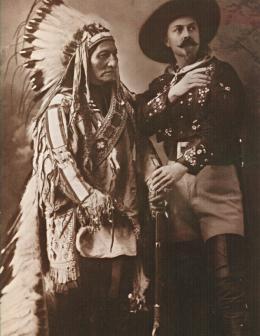Stillman was kind enough to send me a review copy of the book for my inspection. Therefore, here are some quotes from her press materials on the history of horses in the West.
12,000 years ago, the Ice Age: Equus goes extinct on this continent, but not before crossing the Bering land bridge like its forebears and populating Eurasia and elsewhere.
1493: The second voyage of Columbus brings horses to Cuba and sets up a staging ground for the conquest. This first wave of horses is soon joined by others sent from Spain. Cuba becomes the first horse-breeding center in the New World.
1519: Fernando Cortés leaves Cuba for Mexico with 16 horses. One of them foals during the voyage. The 16 horses of the conquest launched the Spanish entrada into Mexico. As the war against the Aztecs unfolds, the original horses perish, but replenishments arrived. Two years later, Cortés says, "We owe it all to God, and the horse."
1598: Juan de Oñate enters into Mexico with 1,500 horses and mules.
1680: Pueblo Indians revolt in Santa Fe, capturing 3,000 horses; the horse makes its way to other tribes.
1687: A descendant of Carvajal’s, Alonzo de León of Nuevo León, brings hundreds of horses and mules from his ranch into Texas, supplying the burgeoning mission system with animals. Soon the missions are plundered, and the horse moves onto the deserts and plains, joining the horses taken in the 1680 revolt.
1700s: There are so many wild horses in Texas that maps mark certain areas as "Vast Herds of Wild Horses," or simply "Wild Horses." The Lakota Indians enter the heart of the Great Plains and their horse culture begins to flourish.
1840: The Ute leader Wakara mounts the greatest horse raid of all time, sacking several Los Angeles missions over a period of days with the help of multinational gangs, making off with thousands of horses. Around the same time, Crazy Horse is born on the Great Plains, although he has not yet been given that fateful name.
1868: Custer lays waste to Black Kettle’s band of Cheyenne on the Washita River in Oklahoma. After most of the men are killed, he orders the massacre of the tribe’s 800 ponies.
1876: Battle of the Little Bighorn, in which Crazy Horse, Sitting Bull, and hundreds of Lakota and Cheyenne destroy Custer and his Seventh Cavalry gray horse unit. More horses than soldiers perish. Later, a badly wounded horse is found wandering the field. He is nursed back to health and becomes famous as the Army mustang named Comanche.
1887: Buffalo Bill and his Wild West show travel to England for a command performance for Queen Victoria. Among the cast are Annie Oakley; Buck Taylor, the King of the Cowboys; nearly 100 Lakota men, women, and children, including Black Elk; and 200 horses, 18 buffalo, and various other animals. The trip inspires ongoing British and European fascination with the West.
1889: Sitting Bull drops out of the Wild West show. According to an apocryphal story, Buffalo Bill gives him the white horse he rode for a farewell gift. Later, when Sitting Bull is killed in the battle outside his cabin, his horse dances until the shooting has ended.
1894-1926: The age of silent movies, many of which are Westerns. Mustangs become America's first movie stars, and the most famous couple in cinema history—the cowboy and his horse—becomes a permanent part of the cultural landscape.
1902: Scores of horses from Buffalo Bill’s Wild West show die in a train accident while traveling through North Carolina. Annie Oakley is injured. The wreck signals the end of an era.
P.S. Smart authors send me free books if they want to get mentioned in Newspaper Rock.


No comments:
Post a Comment